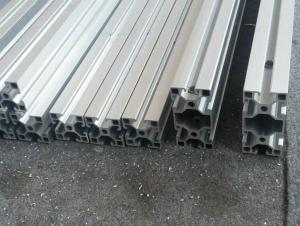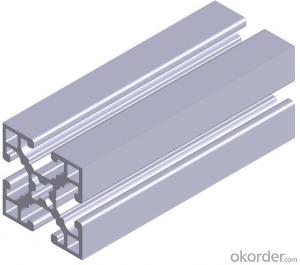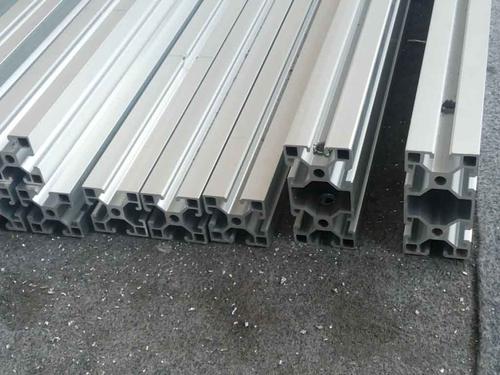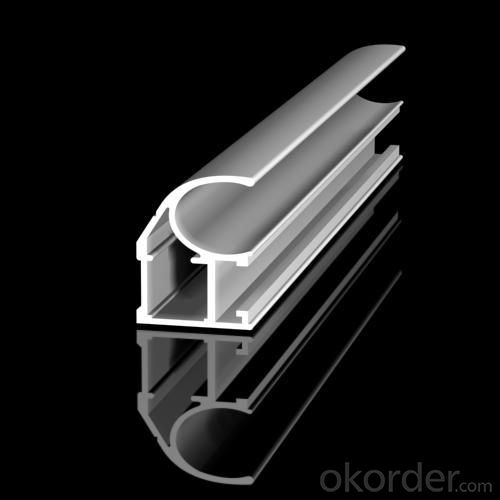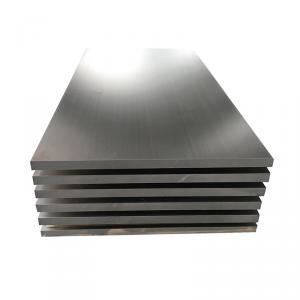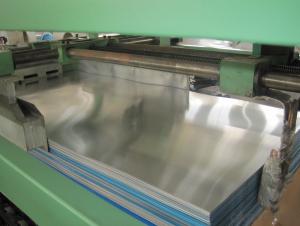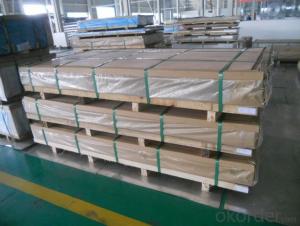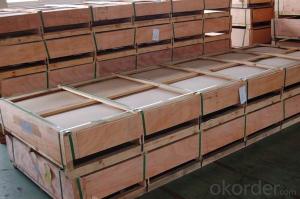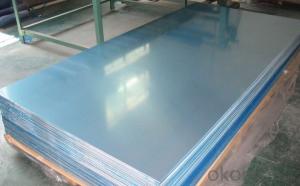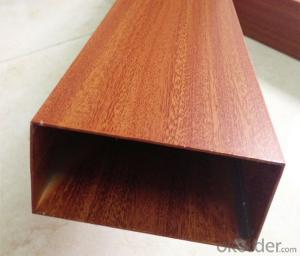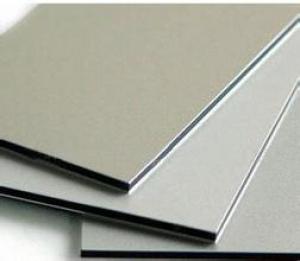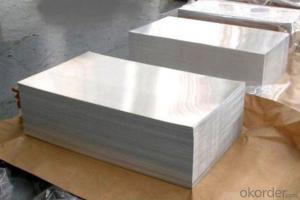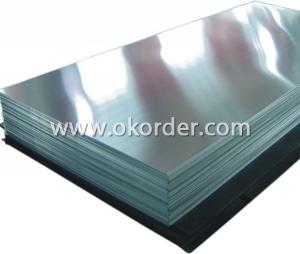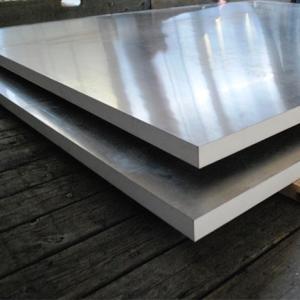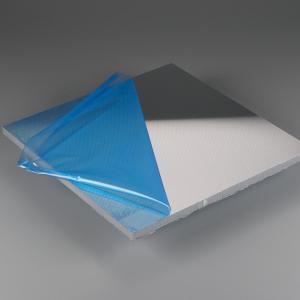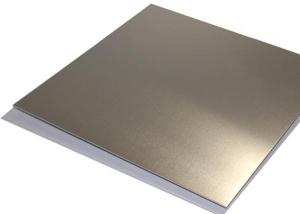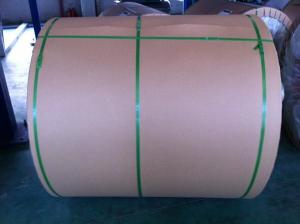Tlc Aluminum Sheets Si60 F254 for Aluminium Tile Trim Profile Windows and Doors Construction Usage
- Loading Port:
- Shanghai
- Payment Terms:
- TT OR LC
- Min Order Qty:
- 20 m.t.
- Supply Capability:
- 2000 m.t./month
OKorder Service Pledge
OKorder Financial Service
You Might Also Like
1.Structure of Aluminium Tile Trim Profile windows and Doors Construction Usage Description:
Aluminium Tile Trim Profile windows and Doors Construction Usage (also spelled anodising, particularly in the UK and Australia) is an electrolytic passivation process used to increase the thickness of the natural oxide layer on the surface of metal parts. Anodized aluminium surfaces, for example, are harder than aluminium but have low to moderate wear resistance that can be improved with increasing thickness or by applying suitable sealing substances.
2.Main Features of the Aluminium Tile Trim Profile windows and Doors Construction Usage:
High corrosion-resistance;
weather-resistance;
heat-resistance;
alkali-resistance and impact-resistance properties.
3.Aluminium Tile Trim Profile windows and Doors Construction Usage Images:
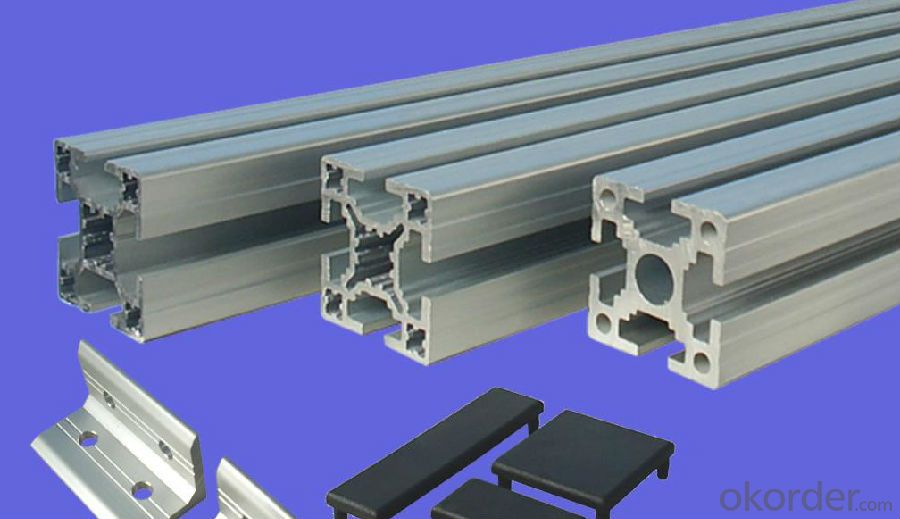
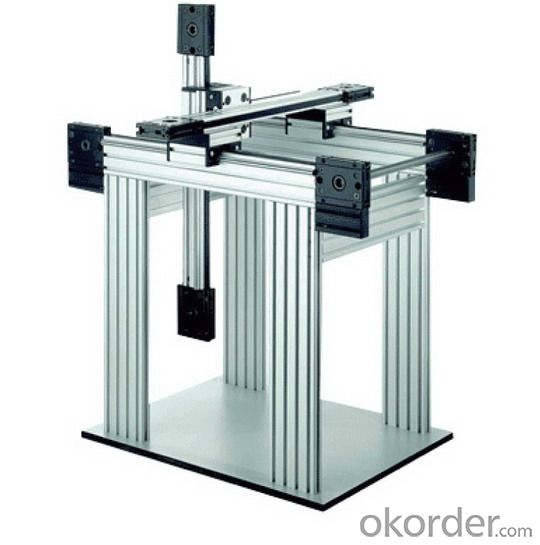
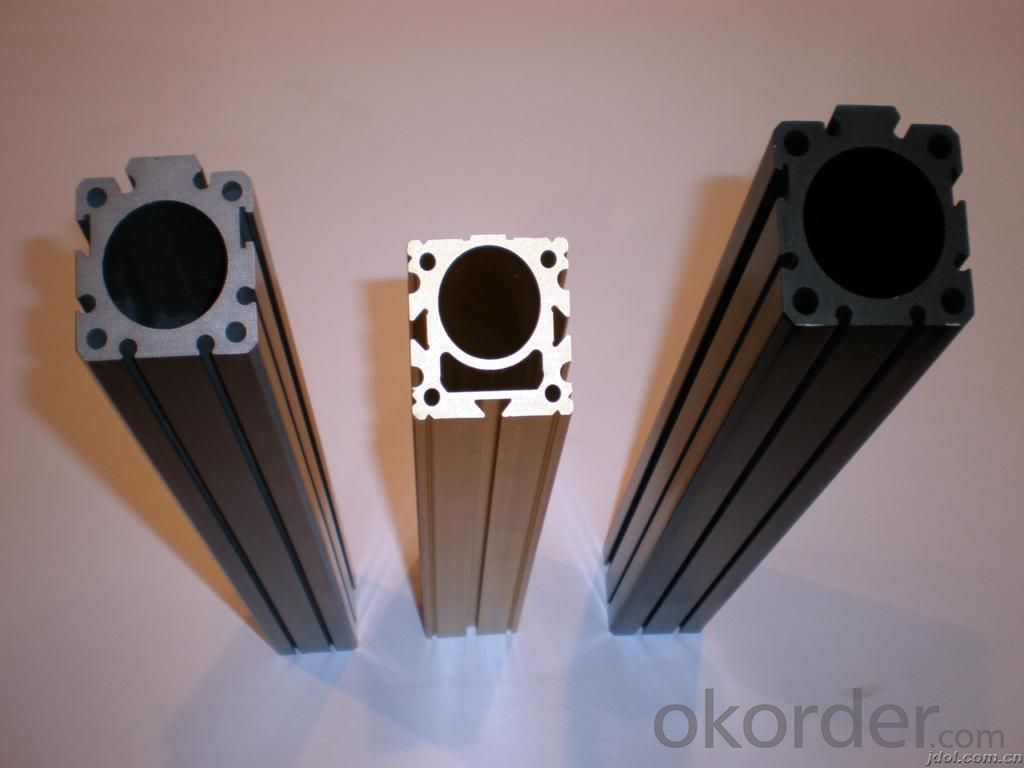
4.Aluminium Tile Trim Profile windows and Doors Construction Usage Specification:
1. Material: 6063,6061,6060,6005,6005A,etc.
2. Temper: T5 or T6
3. Finish: Mill finish, anodizing, powder coating, electrophoresis, wooden transfer or pvdf/carbon-flouride coated, polishing, brushing, sand blasting
4. Various colors: Silver, bronze, black, gold, blue, grey, champagne, bright, etc.
5. Machining: Cutting, punching, drilling, tapping, milling, bending, welding, CNC etc.
5.FAQ:
①How about your company?
A world class manufacturer & supplier of castings forging in carbon steel and alloy steel,is one of the large-scale professional investment casting production bases in China, consisting of both casting foundry forging and machining factory. Annually more than 8000 tons Precision casting and forging parts are exported to markets in Europe, America and Japan. OEM casting and forging service available according to customer’s requirements.
②How to guarantee the quality of the products?
We have established the international advanced quality management system,every link from raw material to final product we have strict quality test;We resolutely put an end to unqualified products flowing into the market. At the same time, we will provide necessary follow-up service assurance.
- Q: Is it possible to use aluminum sheets as a material for flooring?
- <p>Yes, aluminum sheets can be used for flooring applications. They are known for their durability, resistance to corrosion, and ease of maintenance, making them suitable for various environments. Aluminum flooring is often used in commercial, industrial, and residential settings due to its strength and lightweight nature. It can be found in applications such as walkways, ramps, and as a covering for platforms. However, it's important to note that aluminum may not be the best choice for all flooring needs, especially where thermal insulation or a softer, warmer feel is desired.</p>
- Q: I have to wire solar DC photovoltaic panels and have always used at least an 8 gauge wire. Recently, I installed a solar electric fence and they recommended special electric fence wire that can handle 10,000 volts. It looks aluminum. The fence techs told me copper is only rated for 600 volts. And the power will leak through the insulation. They also say copper will corrode and created insulated spots. Does this mean that aluminum doesn't corrode and is it superior to copper? Is is all a lobbying scam to force us to buy copper? Can I use the electric fence wire in my solar wiring?
- The fence tech advise is wrong. Copper can withstand still higher voltage and there is no limitation at all. The limitation of sustainable voltage only depends on the thickness of insulation and its dielectric strength. perhaps, the fence tech told you that that particular wire israted for 600 V, it may be true. The use of copper and aluminium depends on your economy only and the atmosphere to which it is exposed. normally in both copper and aluminium hanged in atmosphere (fence application) both are inert to atmosphere, both creates a oxide layer which inhibits further corrossion. In some high power wiring the power loss in aluminium wire become perhaps significant comparred to the economy. So you will have to use copper. One advantaeg of coper is, it can be drawn to fine wire and so more releable if used as stranded wire. But aluminium is difficcult to draw into fine wires and if used as solid, more prone to break. (This is applicable to copper also.)
- Q: What are the different methods of surface patterning aluminum sheets?
- Aluminum sheets can be patterned using a variety of methods, each with its own benefits and applications. Some commonly used techniques include: 1. Mechanical Etching: By employing abrasive materials like sandpaper or wire brushes, patterns can be created on the aluminum surface. Different pressures and movements can be applied to achieve desired designs. Mechanical etching is a versatile and cost-effective method suitable for both simple and complex patterns. 2. Chemical Etching: Also known as chemical milling, this method involves using chemicals to selectively remove material from the aluminum surface and form patterns. The aluminum sheet is coated with a resist and then submerged in an etchant solution, which dissolves the exposed areas, leaving behind the desired pattern. Chemical etching allows for precise and intricate designs but requires careful control of the etching process. 3. Laser Engraving: This technique utilizes a high-power laser beam to remove material from the aluminum surface and create patterns. The laser beam is controlled by computer software, enabling precise and detailed designs. Laser engraving is suitable for both small and large-scale production, offering high accuracy and repeatability. 4. Embossing: In this method, the aluminum sheet is pressed between two dies with raised patterns, resulting in a three-dimensional design on the surface. Embossing can be achieved through mechanical or hydraulic presses and is commonly used to add texture and aesthetic appeal to aluminum sheets, such as for decorative purposes or branding. 5. Printing: Various printing techniques can be employed to apply patterns onto aluminum sheets. These include screen printing, which involves forcing ink through a mesh screen onto the aluminum surface, and digital printing, which utilizes inkjet technology for high-resolution patterns. Printing methods allow for a wide range of colors and designs, making them suitable for decorative applications. The choice of surface patterning method depends on factors such as desired pattern complexity, production volume, cost considerations, and the intended end-use of the aluminum sheets. Each method offers distinct advantages and limitations, allowing manufacturers to select the most suitable technique according to their specific requirements.
- Q: What kind of material is 2A12 aluminum sheet?
- 2A12 is a typical Al Mg alloy in Al Cu mg system. Its composition is reasonable and its comprehensive properties are better. Many countries produce this alloy, which is the largest in use. The alloy is characterized by high strength, a certain heat resistance, and can be used as working parts below 150 degrees C.
- Q: What is the elongation percentage of 101 aluminum sheets?
- The elongation percentage of 101 aluminum sheets refers to the amount of deformation or stretching the material can undergo before breaking. The exact elongation percentage of 101 aluminum sheets can vary depending on various factors such as the thickness of the sheets and the specific manufacturing process. However, in general, 101 aluminum alloy is known for its excellent formability and high elongation properties. It typically exhibits elongation percentages ranging from 10% to 30%, which means the material can stretch by that percentage of its original length before fracturing.
- Q: Are aluminum sheets suitable for aerospace structural components?
- Aerospace structural components can indeed be made from aluminum sheets. Aluminum is a material that is both lightweight and durable, and it has been used extensively in the aerospace industry for many years. Its exceptional strength-to-weight ratio makes it highly desirable for a range of applications in aircraft manufacturing. Aluminum sheets provide numerous advantages for aerospace structural components. Firstly, their lightweight nature helps to reduce the overall weight of the aircraft. This is crucial for improving fuel efficiency, increasing payload capacity, and enhancing overall performance. Additionally, the lightweight quality of aluminum sheets makes them easier to handle and assemble during the manufacturing process. Secondly, aluminum exhibits excellent resistance to corrosion. This is particularly important for aerospace applications, as the components are exposed to various environmental conditions, such as high humidity, extreme temperatures, and exposure to chemicals. The corrosion resistance of aluminum ensures that the structural components remain durable and long-lasting, reducing the need for frequent maintenance and replacement. Furthermore, aluminum is a highly malleable material, allowing for easy shaping and forming into complex structures. It can be bent, cut, and fabricated with ease to meet specific design requirements, making it versatile for a variety of aerospace applications. The ability to form intricate shapes with aluminum sheets enables engineers to design efficient and streamlined structures, optimizing aerodynamics and minimizing drag. Another advantage of aluminum sheets is their excellent thermal conductivity. This property enables efficient heat dissipation, which is crucial in aerospace applications where components may be exposed to high temperatures generated during flight or engine operation. The thermal conductivity of aluminum helps to prevent overheating and ensures the structural integrity of the components. In conclusion, the lightweight, corrosion resistance, malleability, and thermal conductivity properties of aluminum sheets make them highly suitable for aerospace structural components. These characteristics contribute to the overall performance, efficiency, and safety of aircraft, making aluminum an ideal material for various applications in the aerospace industry.
- Q: Can aluminum sheets be bent without breaking?
- Yes, aluminum sheets can be bent without breaking. Aluminum is a highly malleable metal, which means it can be easily shaped and bent without fracturing or breaking. However, the degree of bendability may vary based on the thickness and alloy composition of the aluminum sheet.
- Q: Is it possible to use aluminum sheets as a material for the exterior walls of a building?
- <p>Yes, aluminum sheets can be used for exterior siding. They are known for their durability, resistance to corrosion, and low maintenance requirements. Aluminum siding is lightweight, easy to install, and can be painted to match various architectural styles. It is also resistant to harsh weather conditions and pests, making it a popular choice for many homeowners and builders. However, it is important to ensure proper installation to maximize its benefits and longevity.</p>
- Q: This question asks for a guide on the correct procedure to install aluminum sheets, likely for construction or renovation purposes.
- <p>To install aluminum sheets properly, follow these steps: 1. Prepare the surface by cleaning and leveling it. 2. Measure and cut the aluminum sheets to the required size using a metal saw or tin snips. 3. Apply a bead of construction adhesive along the edges of the surface where the sheets will be placed. 4. Position the aluminum sheet, ensuring it's aligned correctly. 5. Secure the sheet with screws or nails, using a washer to prevent tearing. 6. Seal the seams and edges with a weatherproof sealant to prevent water ingress. 7. Inspect the installation for any gaps or unevenness and make adjustments as needed. Always follow the manufacturer's guidelines and safety precautions while working with aluminum sheets.</p>
- Q: Can aluminum sheets be anodized for improved hardness?
- Yes, aluminum sheets can be anodized to significantly improve their hardness. Anodizing is an electrochemical process that thickens the natural oxide layer on the surface of the aluminum, creating a durable and corrosion-resistant coating. This process enhances the hardness and durability of the aluminum sheets, making them more resistant to wear, scratches, and other forms of damage.
Send your message to us
Tlc Aluminum Sheets Si60 F254 for Aluminium Tile Trim Profile Windows and Doors Construction Usage
- Loading Port:
- Shanghai
- Payment Terms:
- TT OR LC
- Min Order Qty:
- 20 m.t.
- Supply Capability:
- 2000 m.t./month
OKorder Service Pledge
OKorder Financial Service
Similar products
Hot products
Hot Searches
Related keywords
